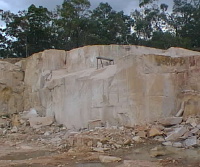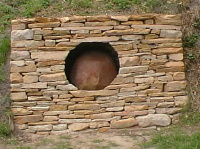New Stone Age
Source
This was originally presented on Arts Today, Radio National ABC 1998
We can ask this question thanks to Christian Thomsen. It was his 1819 exhibition in the Danish National Museum, which introduced the three-age model of material succession: Stone, Bronze and Iron age
And our age? We seem to have acquired the title ‘Information Age’ but this is inconsistent with Thomsen’s logic. His ages are known by their materials, whereas ours is known by its concept. If we were to identify a material for our age, what would it be?
Books, newspapers, magazines, photocopies, brochures, business cards, manilla folders, envelopes, post-its—paper colonises more of our life every day. Even software solutions for electronic publishing can’t help but spawn more hard copies.
Can we refer to the information age as really the age of paper? And what do we achieve by this? I’d like to argue that the materialisation of history allows us to explore how dominant media fashion a culture.
The effect of stone is easy to identify. Stone is the stuff of empire, of unchanging traditions—where would the Bible be today if Moses had descended Mt Sinai bearing a clipboard rather than the stone tablets?
 Dunkeld
quarry on south side of Grampians Today, stone is cast aside for
more ephemeral materials. Our cemeteries face a crisis as fewer elect
to end their days under granite monuments. The downfall of the Berlin
Wall produced an ugly spectacle as that symbol of ideological intransigence
was consumed in an orgy of destruction—its spoils now distributed
throughout the western world.
Dunkeld
quarry on south side of Grampians Today, stone is cast aside for
more ephemeral materials. Our cemeteries face a crisis as fewer elect
to end their days under granite monuments. The downfall of the Berlin
Wall produced an ugly spectacle as that symbol of ideological intransigence
was consumed in an orgy of destruction—its spoils now distributed
throughout the western world.
But who can throw the first stone?
 Andy
Goldsworthy installation on Herring Island using Dunkeld sandstone
Andy
Goldsworthy installation on Herring Island using Dunkeld sandstone
Here I’d like to recommend a most thought-provoking book, Mario Perniola’s volume of contemporary baroque theory, Enigmas: The Egyptian Moment in Society and Art. Going beyond McLuhan, this Italian author examines the implications of a technological evolution that replaces the live media of television and radio with the archival media of video. Written way back at the start of this decade, Perniola seems to anticipate the mania for digital preservation spawned by the Internet. The immense body of data that accumulates through projects such as the Human Genome Project goes beyond any human understanding. Future archaeologists may well decode relics of Silicon Valley with the same confounded awe that accompanied the finds of pyramids in the Luxor valley.
Closer to hand, we should note the coincidence by which conservative British and Australian governments hearken back to the almost superstitious investment of power in stone. Last year, the ailing Tory government returned the ancient stone of scone back to the Scots who originally owned it. And as I speak, the Victorian Premier Jeff Kennett re-convenes a parliament whose plans for architectural completion he had squashed over opposition attempts to deny access to an original sandstone quarry.
I for one hanker after the once popular sculpture triennial, now eclipsed by the growth of art prizes. The time is ripe to unleash the fine contemporary art and craft being constructed out of stone. The appropriately named Mark Stoner’s monumental stupa and accompanying rubbings, Jill Peck’s mammoth Journal of Impermanence made of granite and Margaret West’s delicate pebbles wrapped in gold foil. Like Don Giovanni, the information age awaits its stone nemesis.

Copyright held by author Kevin Murray
For permission to reproduce this article, please contact Kevin
Murray